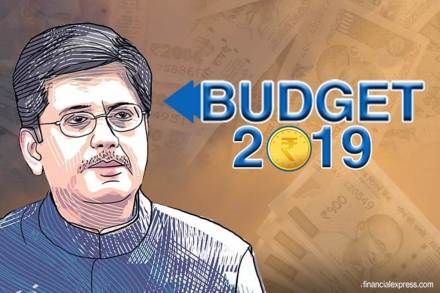Union Budget 2019: The Narendra Modi-led government has heavily resorted to the off-budget allocation of capital expenditure via the Internal and External Budgetary Resources (IEBR) over the last six years, according to a recent report by CARE Ratings. However, at the same time, the allocation by the central government on capital expenditure has either declined or remained almost the same.
The same was also pointed out by the Comptroller and Auditor General of India (CAG) in its audit report, submitted earlier this month.
A study “Off-budget financing of capital expenditure” by CARE Rating, analysed the last 6 budgets and derived patterns of financing capital expenditure. It pointed out that barring the fiscal year (FY) 2014, the off-budget allocation of capital expenditure via the IEBR has been higher than the budgetary allocation of capital expenditure.
Capital expenditure refers to the expenditure, which either creates an asset or causes a reduction in the liabilities of the government. It accounts for around 15% of the total expenditure of the central government and is needed for long-term growth as it involves investment.
The issue holds importance as unlike Gross Budgetary Support (GBS), which comes directly from the budget, the Central Public Sector Enterprises (CPSEs) raise IEBR by way of profits, loans and equity, amongst others.
IBER is an off-budget component and hence does not form a part of the fiscal deficit calculation nor does it get added to the debt of the government.
According to the report, the GBS had declined by around 50% in FY15, while the IEBR declined marginally by around 8% in the same financial year.
Read Also| Budget 2019 Live: Piyush Goyal arrives at the Ministry of Finance, to present Union Budget 2019-20 in Lok Sabha today
With a marginal contraction of 2% in FY18, there has been an increase in GBS in the other budgets (FY16, FY17 and FY19) compared with the previous year. Apart from FY19, which saw a growth in IEBR of less than 1%, the increase in IEBR during FY16-FY18 has been robust ranging between 17%-35%.
Further, the report shows that as a proportion of GBS, the funds raised via external sources have increased from 20% in FY14 to 69% in FY19, after peaking at 79% in FY18.
The report also noted that the funds raised by the CPSEs via external resources have almost tripled in the last six years to Rs 2.1 lakh crores in FY19 from Rs 0.72 lakh crores in FY14. The total funds raised by this process is 35% of the gross market borrowings and 1/3rd of the fiscal deficit quantum in FY19. However, this amount is not included in either arriving at the gross market borrowings for the year or fiscal deficit.
With the general elections around the corner, the trend is expected to continue. Therefore the report marks that given the additional sources of financing available with the government, the total capital expenditure allocation must always be read with caution.
